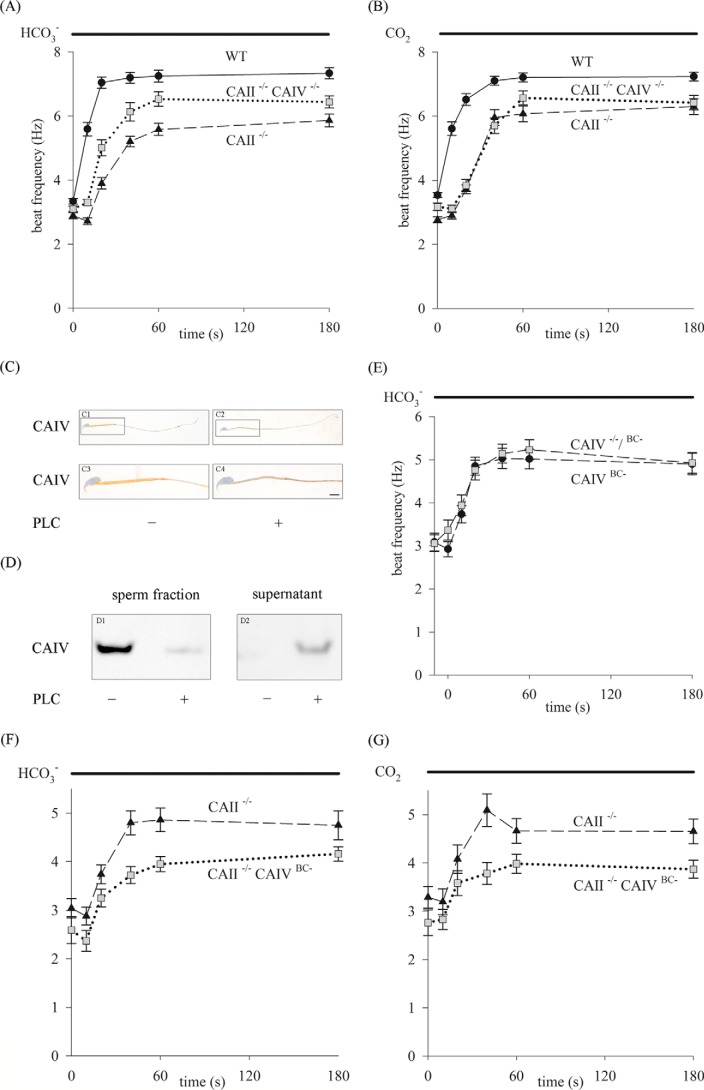FIGURE 8.
Analysis of sperm beat frequency on a single-cell level. A and B, sperm of WT, single CAII−/−, and CAII−/− CAIV−/− animals were stimulated with 15 mm HCO3− (A) or 2% CO2 (B). With both protocols, CAII−/− sperm display the strongest delayed and reduced beat frequency increase compared with CAII−/− CAIV−/− and WT sperm. C and D, biochemical CAIV protein elimination by PLC treatment of WT sperm was tested successfully by DAB staining (C, scale bar = 4 μm) and Western blot analysis (D). E, in single-cell analysis, PLC-treated WT (CAIVBC−) and genetic CAIV−/− sperm (CAIV−/−/BC−) display the same response upon HCO3− stimulation. F and G, shown is the response of genetic CAII−/− and CAII−/− CAIVBC− double knockout sperm to HCO3− (F) and CO2 (G). The beat frequency of CAII−/− CAIVBC− sperm increases only to a maximum of 4.16 ± 0.15 Hz with HCO3− and of 3.87 ± 0.19 Hz with CO2 application (t = 80 s) and displays the weakest response. Data are mean ± S.E. of ≥17 single sperm.

